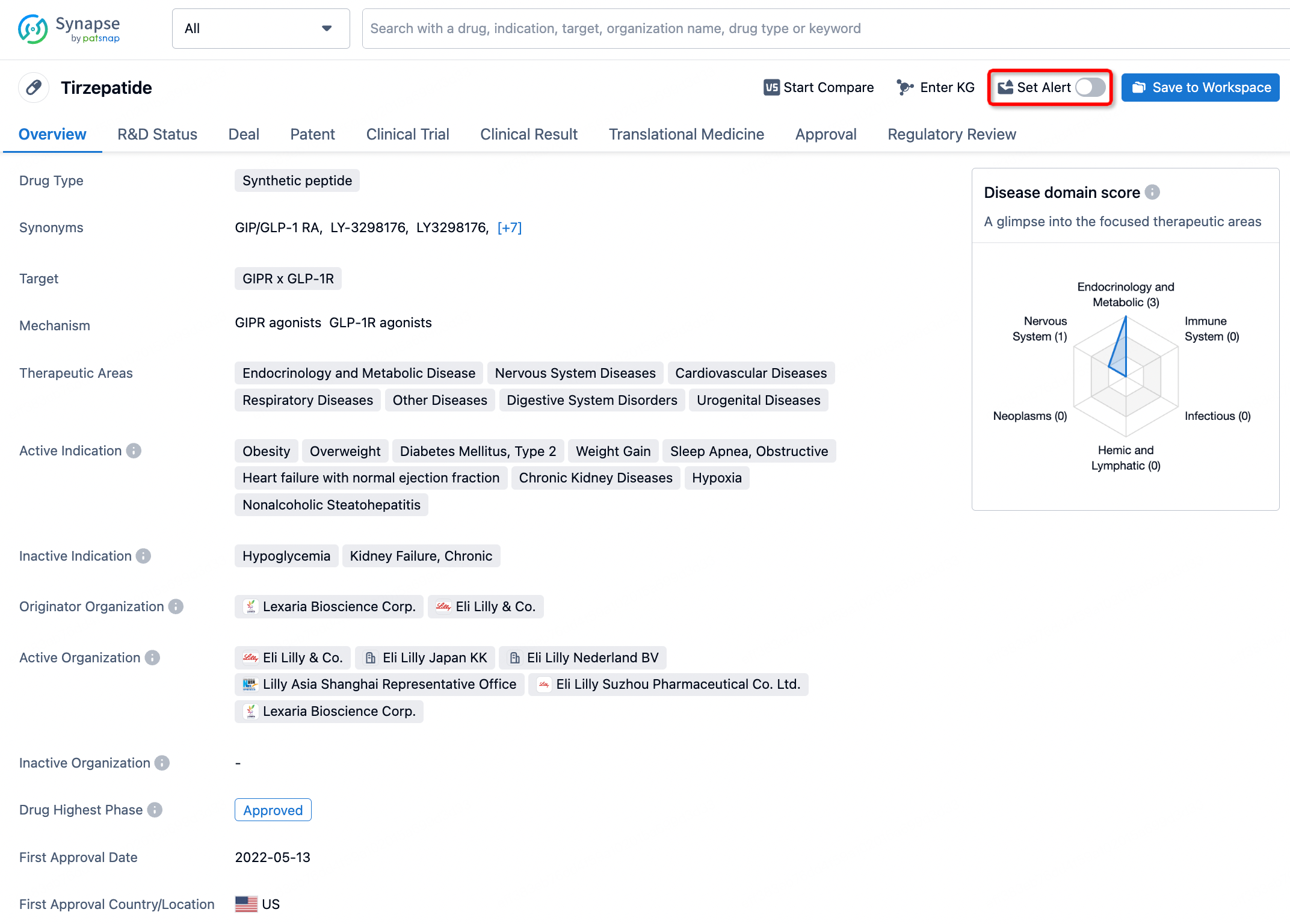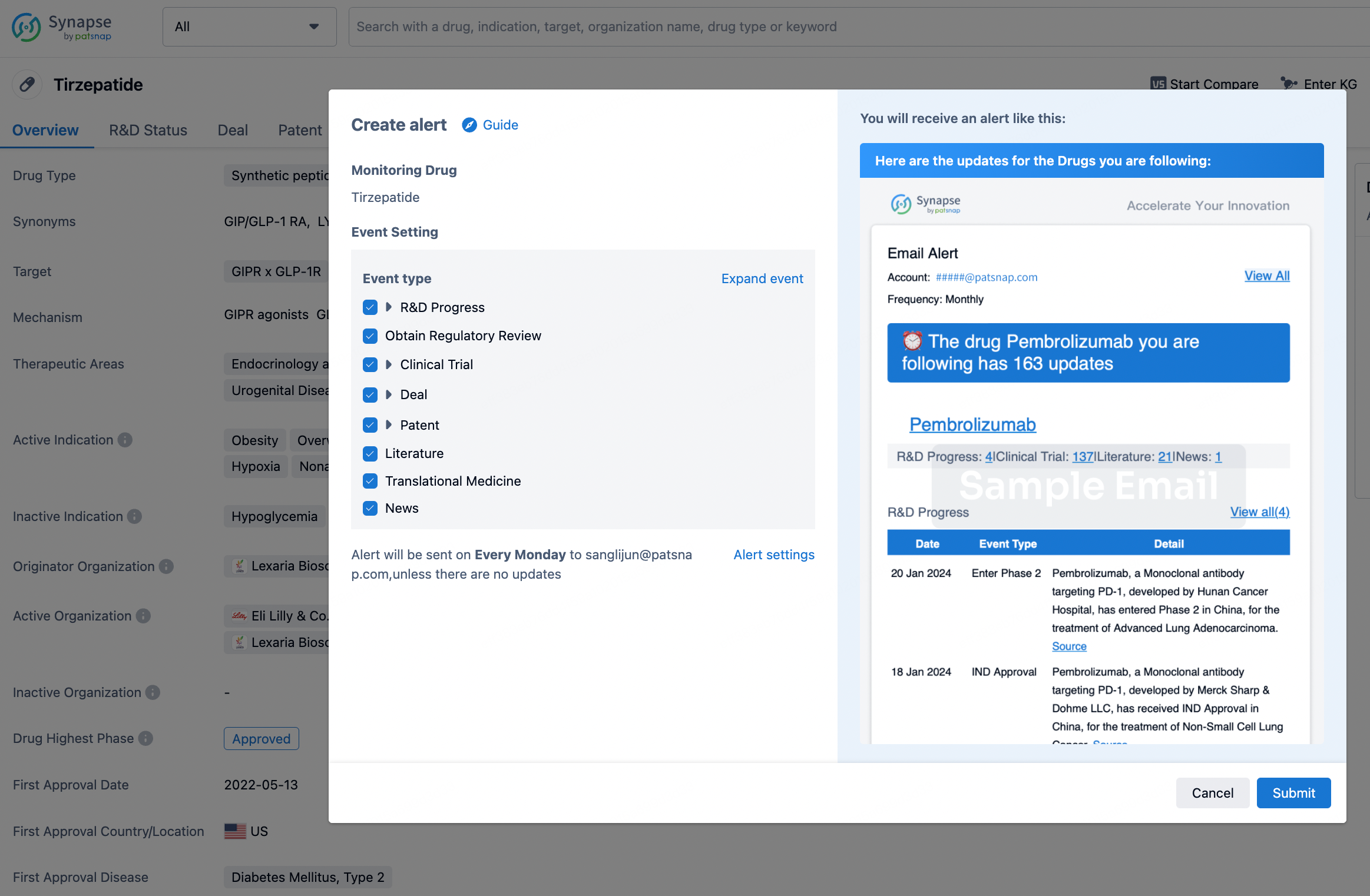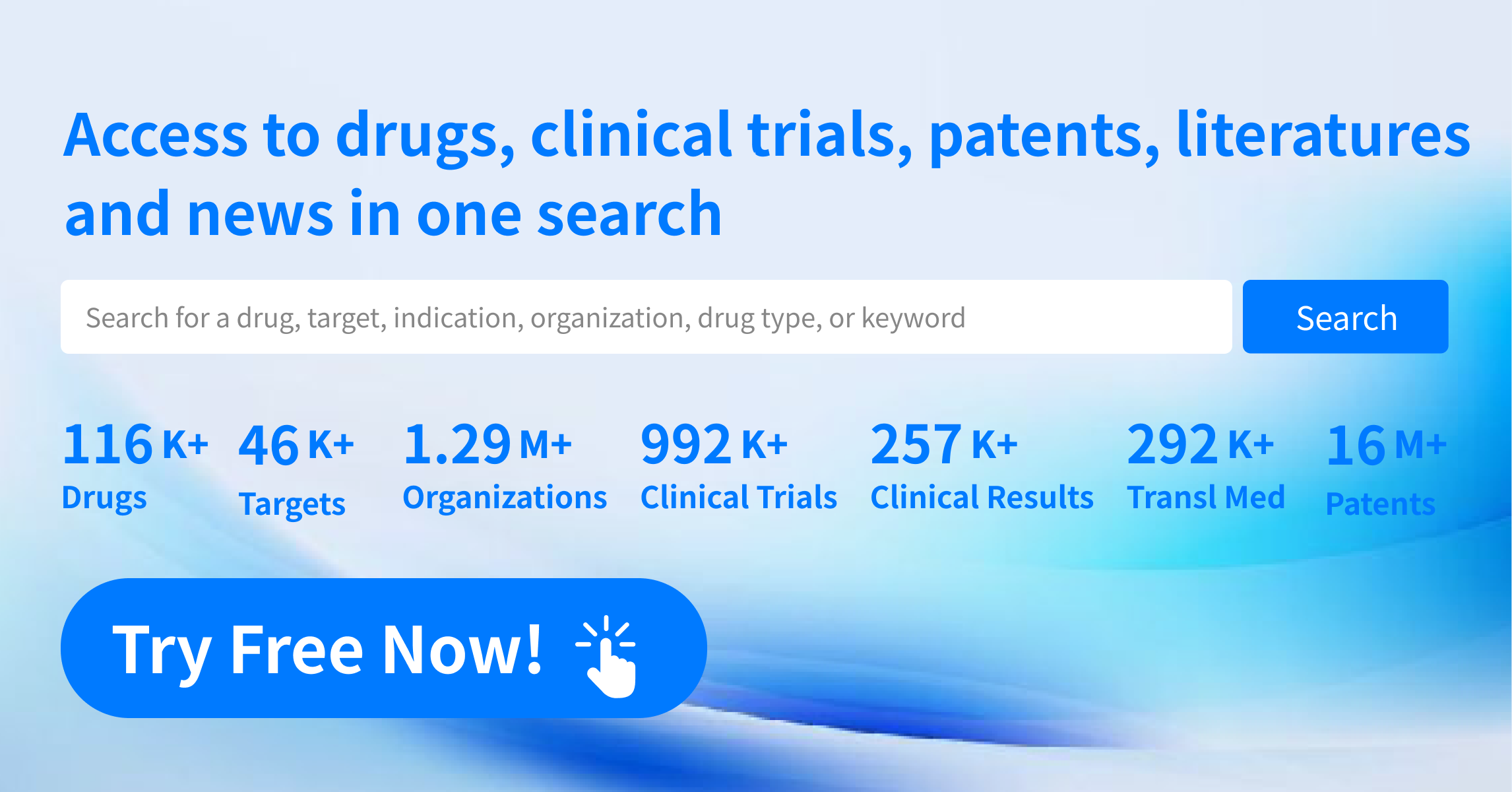Request Demo
What is Oxolinic Acid used for?
15 June 2024
Oxolinic acid is an antibiotic that belongs to the quinolone class of drugs. It is primarily used in veterinary medicine, although it has applications in human medicine as well. The drug is marketed under several trade names, including Uroxin, Oxolin, and Oxin, among others. Developed initially in the 1970s, oxolinic acid is primarily used to treat bacterial infections in animals, particularly those caused by Gram-negative bacteria. Research institutions have extensively studied oxolinic acid to evaluate its efficacy, safety profile, and mechanisms of action. This drug is particularly effective against urinary tract infections, gastrointestinal infections, and respiratory tract infections. While its use in human medicine has declined, primarily due to the development of newer antibiotics, oxolinic acid remains a valuable tool in veterinary medicine.
Oxolinic Acid Mechanism of Action
Oxolinic acid works by inhibiting bacterial DNA gyrase, an enzyme that plays a crucial role in DNA replication. DNA gyrase is responsible for introducing negative supercoils into DNA, which is essential for various DNA functions, including replication, transcription, and recombination. By inhibiting this enzyme, oxolinic acid disrupts the supercoiling of DNA, thereby preventing bacterial cell division and leading to cell death. This mechanism makes it particularly effective against rapidly dividing bacteria.
The drug's action is bactericidal, meaning it kills bacteria rather than merely inhibiting their growth. This is a significant advantage in treating severe infections where the rapid eradication of the pathogen is crucial. However, the effectiveness of oxolinic acid can be influenced by several factors, including the bacterial strain, the concentration of the drug, and the presence of resistance mechanisms in the bacteria.
How to Use Oxolinic Acid
Oxolinic acid can be administered in various ways, depending on the type of infection and the species being treated. In veterinary medicine, it is commonly available in oral formulations, such as tablets or powders, which can be mixed with food or water. The dosage and duration of treatment depend on the severity of the infection, the species being treated, and the specific bacterial strain involved. It is crucial to follow the prescribed dosage regimen to ensure the effectiveness of the treatment and to minimize the risk of resistance development.
The onset time of oxolinic acid varies, but it typically begins to show effects within a few hours of administration. However, the complete resolution of symptoms may take several days, depending on the severity of the infection and the response of the animal to the treatment. It is essential to complete the full course of treatment, even if the symptoms improve before the medication is finished, to prevent the recurrence of the infection and the development of resistant bacteria.
What is Oxolinic Acid Side Effects
Like all medications, oxolinic acid can cause side effects. The most common side effects include gastrointestinal disturbances such as nausea, vomiting, and diarrhea. These side effects are usually mild and resolve on their own without requiring medical intervention. However, in some cases, more severe side effects can occur, such as allergic reactions, which may manifest as skin rashes, itching, swelling, or difficulty breathing. If any of these severe side effects occur, it is essential to seek immediate medical attention.
Oxolinic acid is contraindicated in animals with a known hypersensitivity to quinolones. It should also be used with caution in animals with renal or hepatic impairment, as these conditions can affect the drug's metabolism and excretion, potentially leading to toxicity. Additionally, the use of oxolinic acid in pregnant or lactating animals should be avoided unless absolutely necessary, as there is limited data on its safety in these populations.
It is also important to note that the improper use of oxolinic acid, such as using it for viral infections or not completing the prescribed course of treatment, can contribute to the development of antibiotic resistance. Therefore, it is crucial to use this medication only as directed by a veterinarian.
What Other Drugs Will Affect Oxolinic Acid
Several drugs can interact with oxolinic acid, potentially altering its effectiveness or increasing the risk of side effects. For example, its absorption can be reduced when administered concurrently with antacids containing magnesium or aluminum, as these substances can bind to the drug and prevent its absorption in the gastrointestinal tract. Therefore, it is recommended to administer oxolinic acid at least two hours before or after taking such antacids.
Non-steroidal anti-inflammatory drugs (NSAIDs) can also interact with oxolinic acid. The concurrent use of NSAIDs and quinolones has been associated with an increased risk of central nervous system stimulation, which can lead to seizures. Therefore, caution is advised when administering these drugs together, and it may be necessary to adjust the dosage or monitor the animal closely for signs of adverse reactions.
Additionally, drugs that affect renal function, such as diuretics or certain other antibiotics, can alter the excretion of oxolinic acid and potentially lead to toxicity. It is essential to inform the veterinarian of all medications and supplements the animal is currently taking to avoid potential interactions.
In conclusion, oxolinic acid is a valuable antibiotic with a specific mechanism of action that makes it effective against certain bacterial infections, particularly in veterinary medicine. While it has a good safety profile, it is essential to use it as directed and be aware of potential side effects and drug interactions. By following these guidelines, oxolinic acid can be an effective tool in managing bacterial infections and promoting the health and well-being of animals.
Oxolinic Acid Mechanism of Action
Oxolinic acid works by inhibiting bacterial DNA gyrase, an enzyme that plays a crucial role in DNA replication. DNA gyrase is responsible for introducing negative supercoils into DNA, which is essential for various DNA functions, including replication, transcription, and recombination. By inhibiting this enzyme, oxolinic acid disrupts the supercoiling of DNA, thereby preventing bacterial cell division and leading to cell death. This mechanism makes it particularly effective against rapidly dividing bacteria.
The drug's action is bactericidal, meaning it kills bacteria rather than merely inhibiting their growth. This is a significant advantage in treating severe infections where the rapid eradication of the pathogen is crucial. However, the effectiveness of oxolinic acid can be influenced by several factors, including the bacterial strain, the concentration of the drug, and the presence of resistance mechanisms in the bacteria.
How to Use Oxolinic Acid
Oxolinic acid can be administered in various ways, depending on the type of infection and the species being treated. In veterinary medicine, it is commonly available in oral formulations, such as tablets or powders, which can be mixed with food or water. The dosage and duration of treatment depend on the severity of the infection, the species being treated, and the specific bacterial strain involved. It is crucial to follow the prescribed dosage regimen to ensure the effectiveness of the treatment and to minimize the risk of resistance development.
The onset time of oxolinic acid varies, but it typically begins to show effects within a few hours of administration. However, the complete resolution of symptoms may take several days, depending on the severity of the infection and the response of the animal to the treatment. It is essential to complete the full course of treatment, even if the symptoms improve before the medication is finished, to prevent the recurrence of the infection and the development of resistant bacteria.
What is Oxolinic Acid Side Effects
Like all medications, oxolinic acid can cause side effects. The most common side effects include gastrointestinal disturbances such as nausea, vomiting, and diarrhea. These side effects are usually mild and resolve on their own without requiring medical intervention. However, in some cases, more severe side effects can occur, such as allergic reactions, which may manifest as skin rashes, itching, swelling, or difficulty breathing. If any of these severe side effects occur, it is essential to seek immediate medical attention.
Oxolinic acid is contraindicated in animals with a known hypersensitivity to quinolones. It should also be used with caution in animals with renal or hepatic impairment, as these conditions can affect the drug's metabolism and excretion, potentially leading to toxicity. Additionally, the use of oxolinic acid in pregnant or lactating animals should be avoided unless absolutely necessary, as there is limited data on its safety in these populations.
It is also important to note that the improper use of oxolinic acid, such as using it for viral infections or not completing the prescribed course of treatment, can contribute to the development of antibiotic resistance. Therefore, it is crucial to use this medication only as directed by a veterinarian.
What Other Drugs Will Affect Oxolinic Acid
Several drugs can interact with oxolinic acid, potentially altering its effectiveness or increasing the risk of side effects. For example, its absorption can be reduced when administered concurrently with antacids containing magnesium or aluminum, as these substances can bind to the drug and prevent its absorption in the gastrointestinal tract. Therefore, it is recommended to administer oxolinic acid at least two hours before or after taking such antacids.
Non-steroidal anti-inflammatory drugs (NSAIDs) can also interact with oxolinic acid. The concurrent use of NSAIDs and quinolones has been associated with an increased risk of central nervous system stimulation, which can lead to seizures. Therefore, caution is advised when administering these drugs together, and it may be necessary to adjust the dosage or monitor the animal closely for signs of adverse reactions.
Additionally, drugs that affect renal function, such as diuretics or certain other antibiotics, can alter the excretion of oxolinic acid and potentially lead to toxicity. It is essential to inform the veterinarian of all medications and supplements the animal is currently taking to avoid potential interactions.
In conclusion, oxolinic acid is a valuable antibiotic with a specific mechanism of action that makes it effective against certain bacterial infections, particularly in veterinary medicine. While it has a good safety profile, it is essential to use it as directed and be aware of potential side effects and drug interactions. By following these guidelines, oxolinic acid can be an effective tool in managing bacterial infections and promoting the health and well-being of animals.
How to obtain the latest development progress of all drugs?
In the Synapse database, you can stay updated on the latest research and development advances of all drugs. This service is accessible anytime and anywhere, with updates available daily or weekly. Use the "Set Alert" function to stay informed. Click on the image below to embark on a brand new journey of drug discovery!
AI Agents Built for Biopharma Breakthroughs
Accelerate discovery. Empower decisions. Transform outcomes.
Get started for free today!
Accelerate Strategic R&D decision making with Synapse, PatSnap’s AI-powered Connected Innovation Intelligence Platform Built for Life Sciences Professionals.
Start your data trial now!
Synapse data is also accessible to external entities via APIs or data packages. Empower better decisions with the latest in pharmaceutical intelligence.


